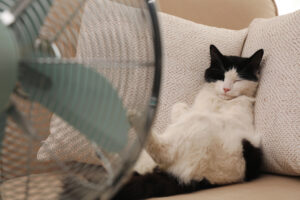
Top Cat Exercises to Keep Your Cat Healthy and Stimulated
Cats, like dogs and people, need regular exercise to keep themselves healthy, despite their reputation for being independent and sometimes sluggish. By keeping your cat physically and mentally stimulated through regular exercises and activities, you are helping them live an active life and have positive behavior Check out our rundown of some great activities to keep your ferocious feline fit as a fiddle!

Boarding Clients!*Discount does not apply during holiday/peak rate periods.

Why Exercise is Important for Cats
Cats are quite good hunters, despite their character as couch potatoes! In the wild, they would devote a large chunk of their day to hunting, stalking, pouncing, and capturing their prey. Domestic cats, unfortunately, don’t usually get enough of these chances for exercise and mental stimulation, which can cause problems like diabetes, obesity, and joint pain. Regular cat exercise can help in the following ways:
Maintain a Healthy Weight: Your cat can maintain a healthy weight and lower its risk of obesity-related diseases by engaging in regular physical activity, which burns calories.
Improve Joint Health: The flexibility and strength of your cat’s joints are maintained through regular exercise, which is particularly beneficial for cats as they age.
Enhance Mental Stimulation: Playing with your cat keeps its mind active, which helps keep it from getting bored and acting out in destructive or aggressive ways.
Strengthen the Bond: Interacting with your feline friend through playtime deepens your connection, which in turn fosters love and trust.
Top Exercises for Cats
1. Interactive Play with Toys
Engaging in interactive play with toys is a tried-and-true method for getting your cat active. Your cat’s natural hunting instincts can be stimulated by playing with toys that imitate the movements of prey.
Feather Wands: The ends of these long sticks are adorned with feathers. Your cat will be tempted to jump, pounce, and swat at these fluttering, bird-like decorations.
Laser Pointers: The red dot on a laser pointer is so elusive that cats go crazy chasing it. Be careful not to aim the laser beam directly into your cat’s eyes, and to keep them from getting frustrated, always give them a tangible toy to play with after each session.
Catnip Toys: Toys filled with catnip can entice your feline friend and inspire them to play and get some exercise. Playtime becomes more interesting when cats sniff at the alluring aroma of catnip.

2. Puzzle Toys and Treat Dispensers
You can get your muscles and brain working together with puzzle toys and snack dispensers. These toys are perfect for keeping your cat active and engaged because they require them to work in order to get a treat.
Food Puzzles: For your cat to enjoy the treats inside these toys, it must first figure out how to open them. The mental and physical stimulation they get from playing with the toy (pushing, pawing, and manipulating it) is priceless.
Treat Balls: As you roll them around, they’ll release treats. To get to the treats, your cat will be encouraged to chase and bat the ball.
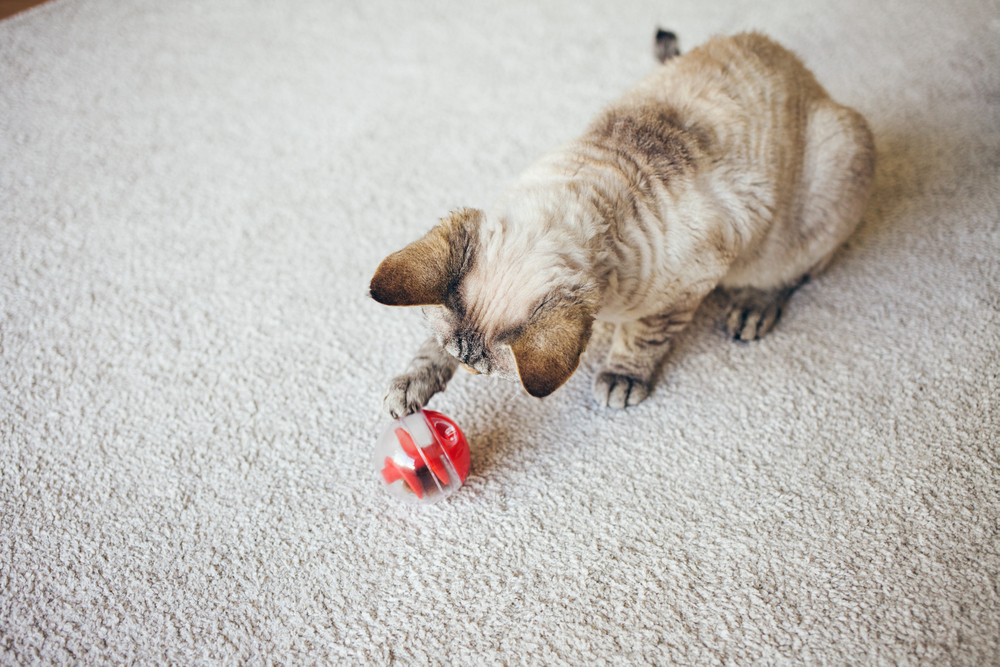
3. Climbing and Scratching Structures
Climbing and scratching are two of every cat’s favorite things to do, and they’re also good for their mental and physical health. Cats can get lots of exercise and amusement out of climbing and scratching posts.
Towers and Trees for Cats: Your cat can climb and perch on all sorts of different surfaces in these multi-story buildings. To accommodate your cat’s innate behaviors, many of these items include built-in scratching posts and hiding spots.
Wall Shelves: Make a climbing apparatus for your feline friend by mounting shelves on your walls at varying heights. In cramped apartments, this can be a lifesaver.
Scratching Posts: Cats scratching is an instinctive behavior. It serves multiple purposes: marking territory, strengthening muscles, and shedding the outer layers of their claws. To promote this beneficial habit, strong scratching posts should be considered an invaluable purchase for every cat-friendly home.
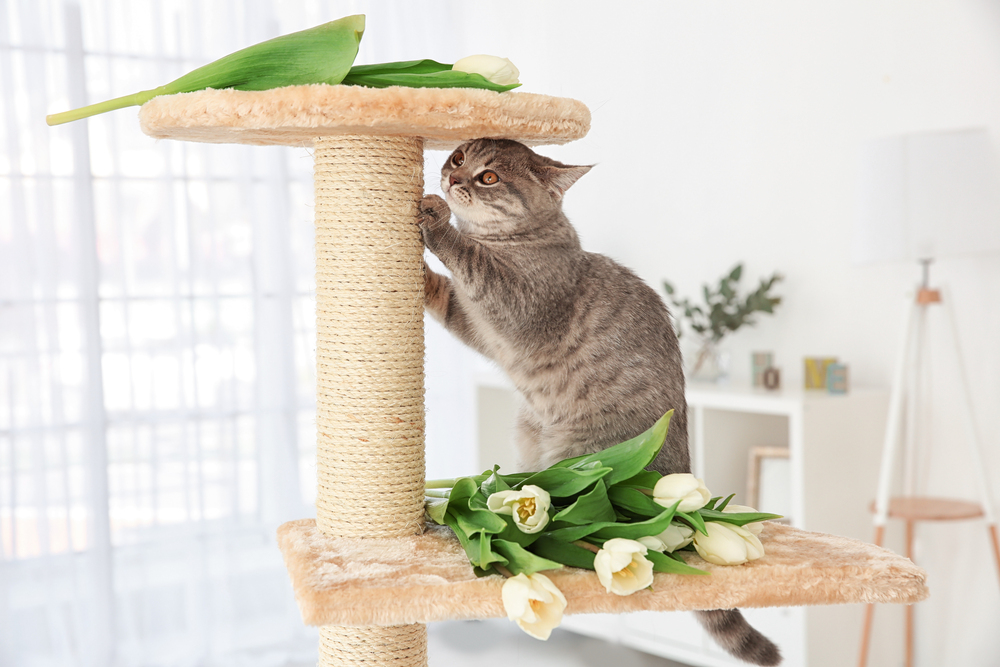
4. Fetch and Retrieval Games
Cats can enjoy the game of fetch just as much as dogs do. Teaching your cat to play fetch is a great way to engage them physically and mentally.
Start Small: Choose small, lightweight toys that your feline friend can easily gnaw on. If you want your cat to fetch a toy, throw it a short distance and call it back.
Use Positive Reinforcement: When your cat returns the toy to you, praise and treats are appropriate rewards. This not only makes the game more fun for them, but it also reinforces the good behavior.
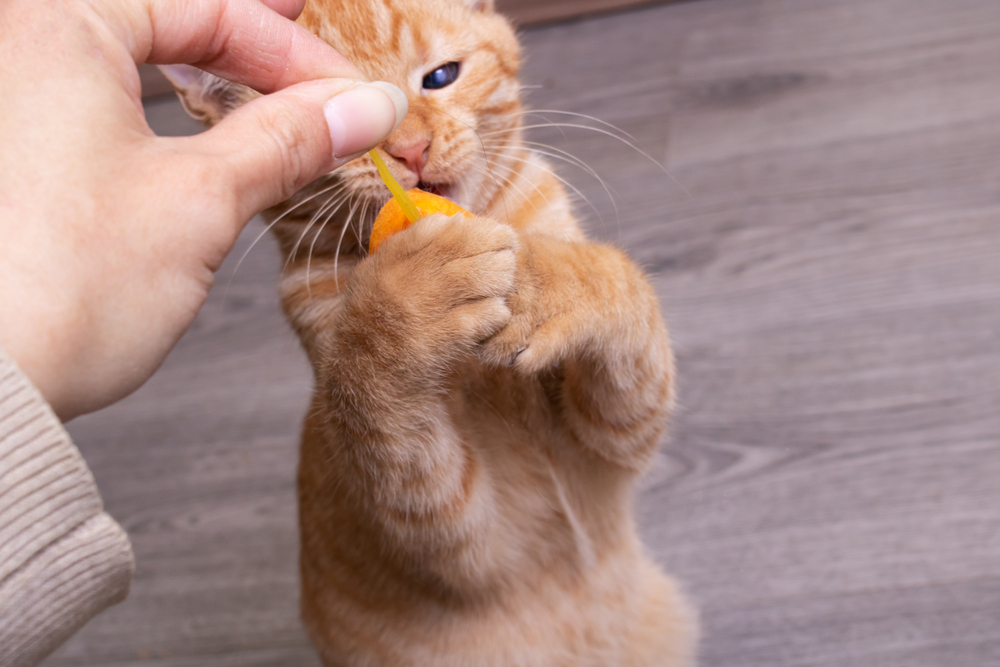
5. DIY Obstacle Courses
One fun and easy way to keep your cat active and stimulated is to build an obstacle course in your own home. Build everything from bridges to platforms using common household items.
Crawling Tunnels: Make a maze out of cardboard boxes or blankets. This is very similar to the feeling of stalking prey in confined areas.
Hurdles: Put up some little hurdles for your cat to jump over. To help your cat gain self-assurance, begin with lower hurdles and work your way up to higher ones.
Platforms: Create a variety of heights of platforms by arranging stable furniture such as chairs and stools. Get your cat to hop from one to the other.
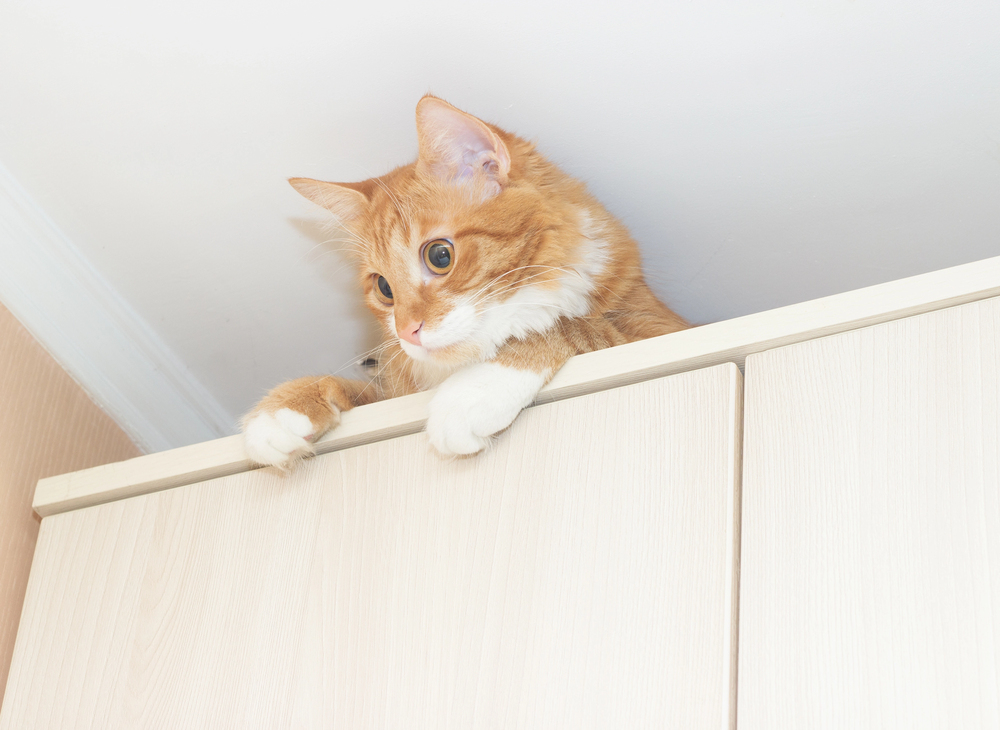
6. Window Watching
Cats love to gaze out the window because they are inherently inquisitive. Creating a cozy perch near a window can offer your feline friend endless amusement and visual stimulation.
Bird Feeders: To keep your cat occupied and interested, try setting up a bird feeder outside the window.
Perches for Windows: Install a secure window perch or hammock to give your cat a comfortable place to sit and observe the outside world.
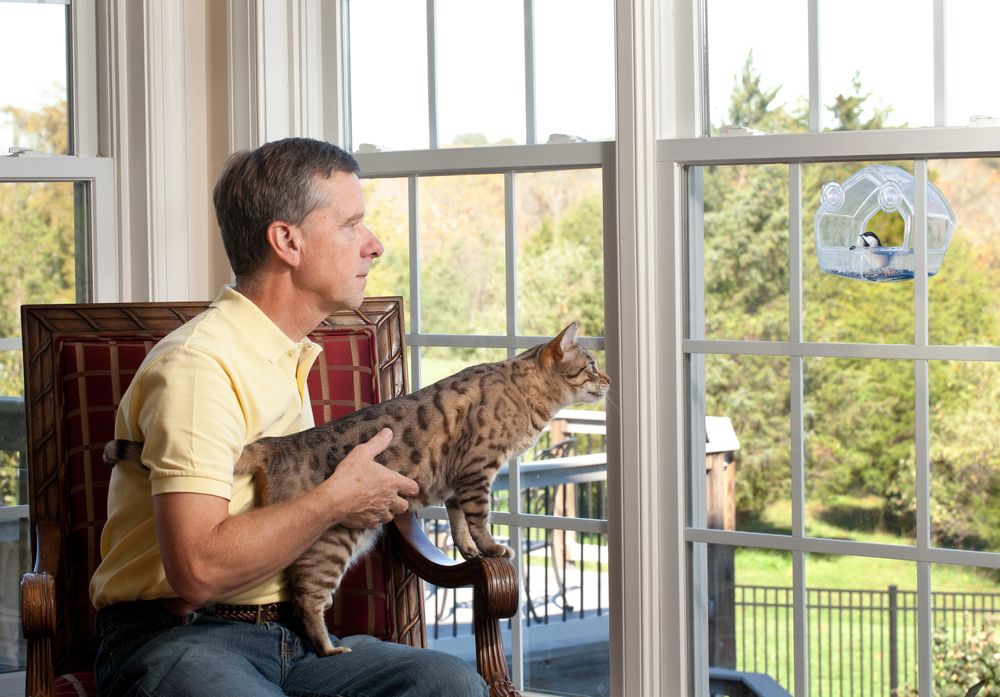
7. Scheduled Playtime
Maintaining an active lifestyle for your cat requires consistency. To make sure your cat gets enough exercise, plan to play with it at regular intervals throughout the day.
Morning and Evening Play Sessions: Crepuscular cats, as the name implies, are at their most active at sunrise and sunset. To accommodate their innate schedules, try to plan playtime around these times.
Short, Frequent Sessions: Instead of playing for hours at a time, break it up into smaller sessions throughout the day. This will keep your feline friend from getting bored or stressed out.
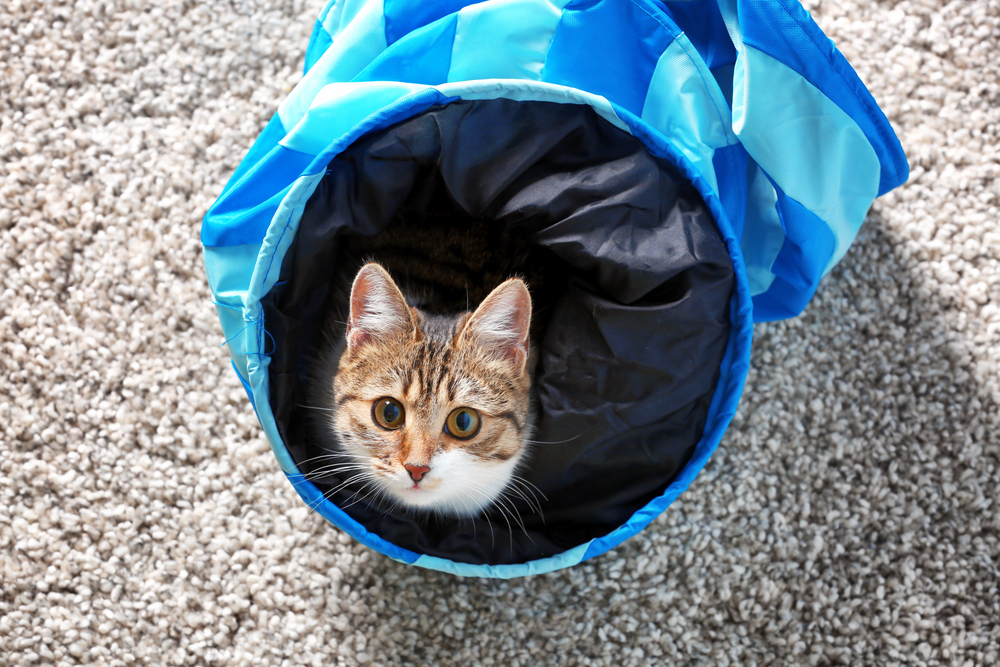
Tips for Encouraging Exercise
When your cat is older or less active, it might be more difficult to motivate them to exercise. To inspire your feline companion, consider the following:
Start Slowly
Introducing new toys and activities should be done gradually. Your feline friend may require some acclimatization time if playing is new to them.
Use Positive Reinforcement
Give your cat a treat, show them some love, or compliment them when they play. By doing so, your cat will learn to associate exercise with good things.
Keep It Fun
To maintain interest, switch up the toys and games. Prevent boredom by rotating toys regularly.
Patience is Key
Every cat is unique. Some may be more naturally gifted at trying new things, while others may require more time. Take your time and keep at it.
Overall
To ensure your cat’s overall health and happiness, it is essential to give them regular exercise activities. You can keep your feline friends active and mentally stimulated by providing them with a variety of toys and activities. Always make sure to take your cat’s unique tastes and needs into account when playing with them and strive to make it a pleasurable experience for both of you.














